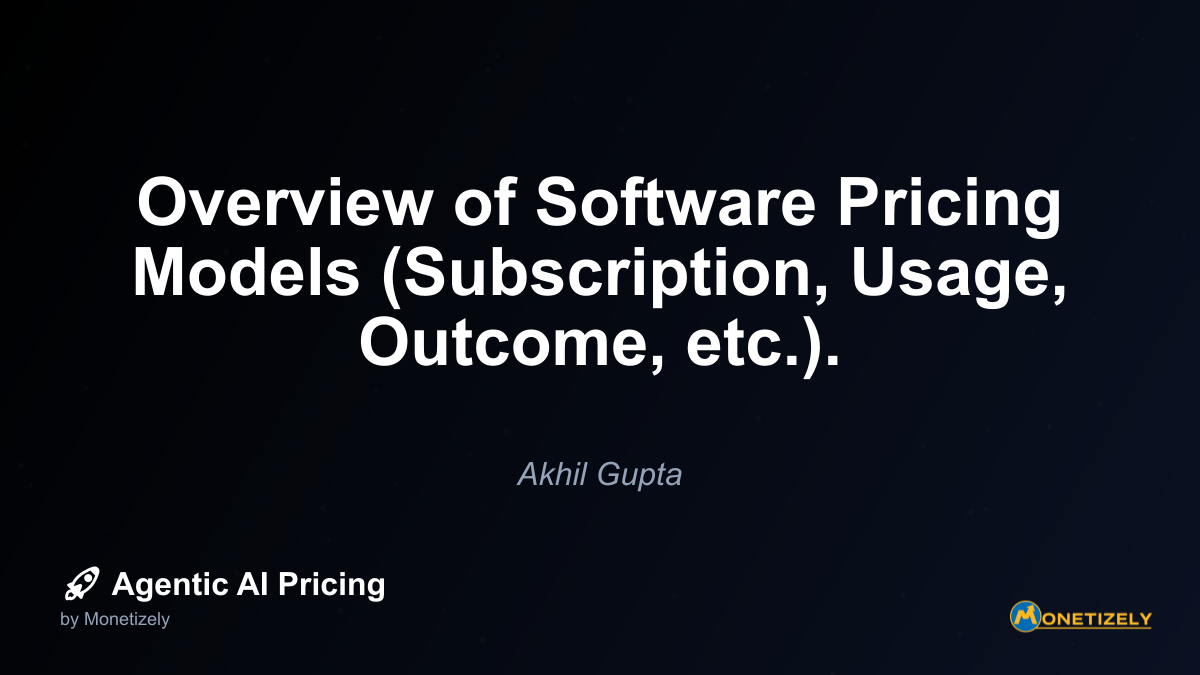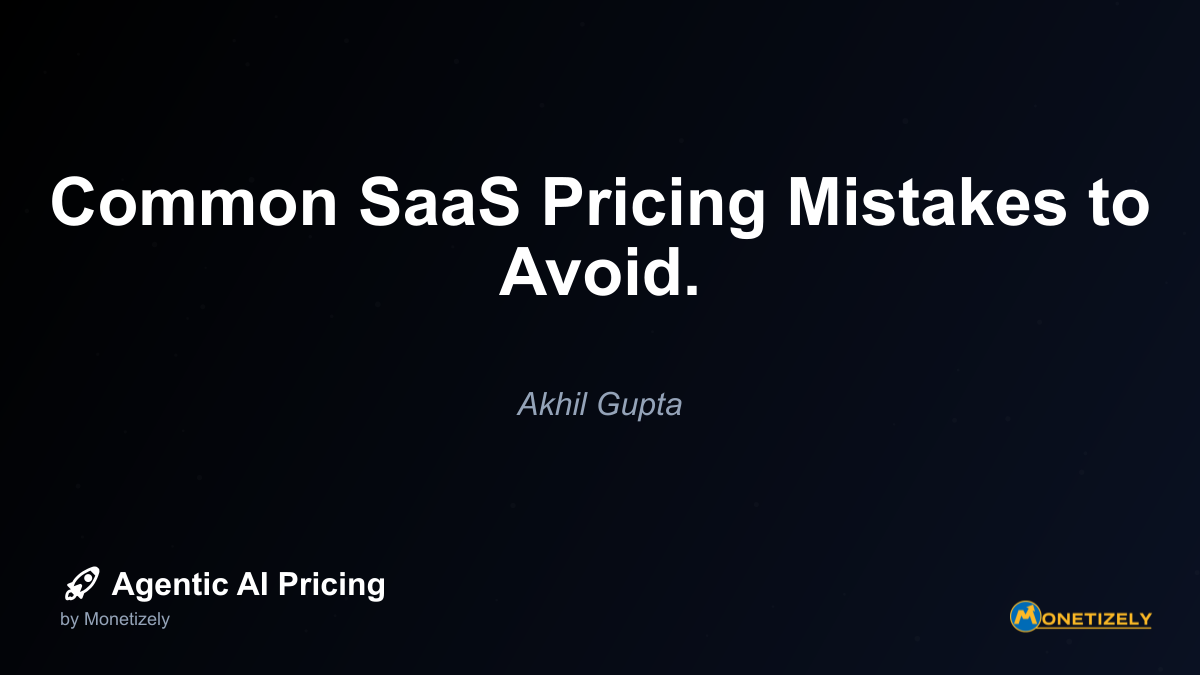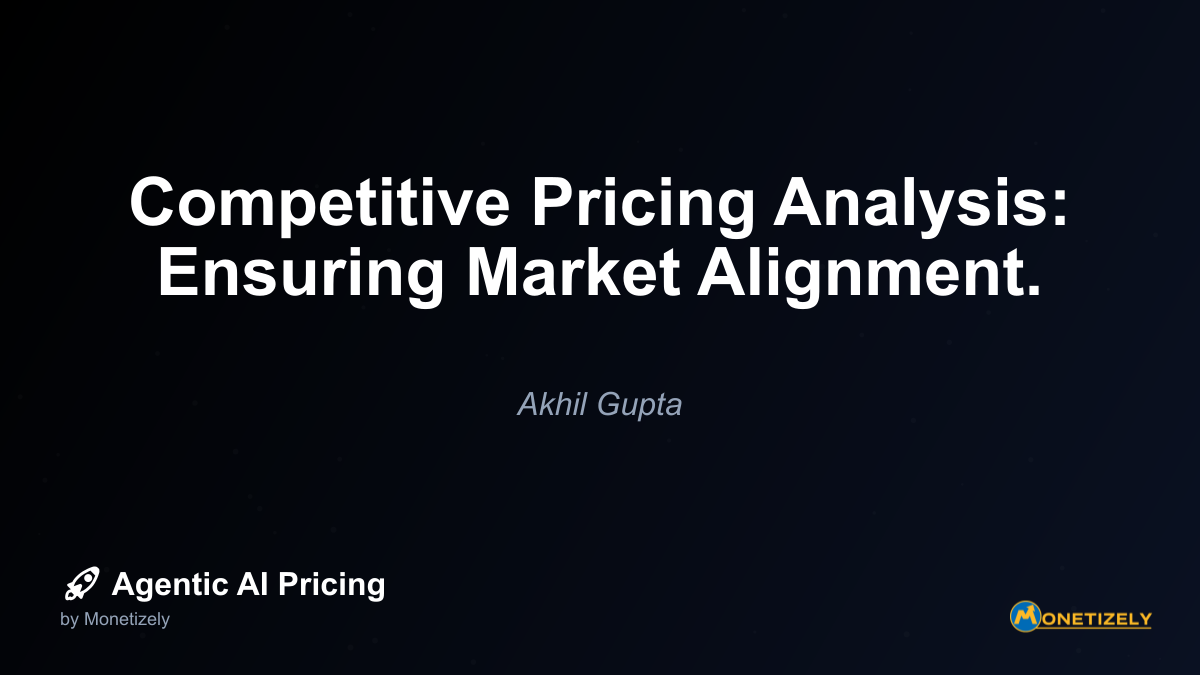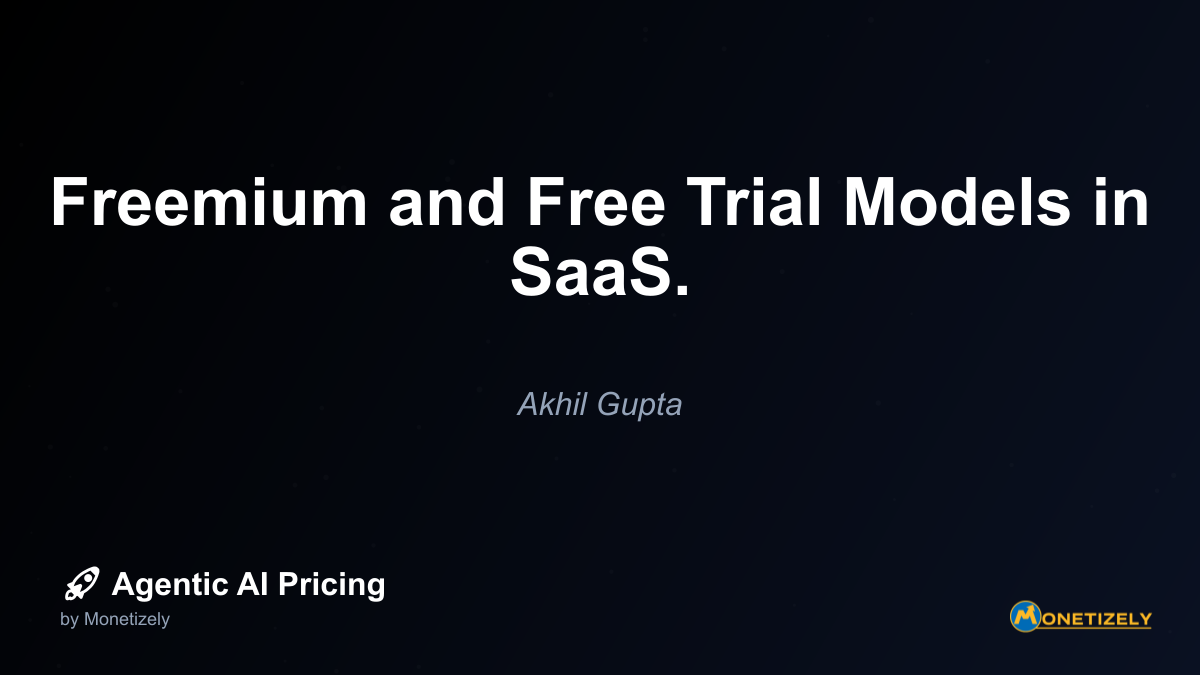· Ajit Ghuman · Pricing Fundamentals · 5 min read
Outcome-Based Pricing: Aligning Cost with Results.
AI and SaaS Pricing Masterclass
Learn the art of strategic pricing directly from industry experts. Our comprehensive course provides frameworks and methodologies for optimizing your pricing strategy in the evolving AI landscape. Earn a professional certification that can be imported directly to your LinkedIn profile.
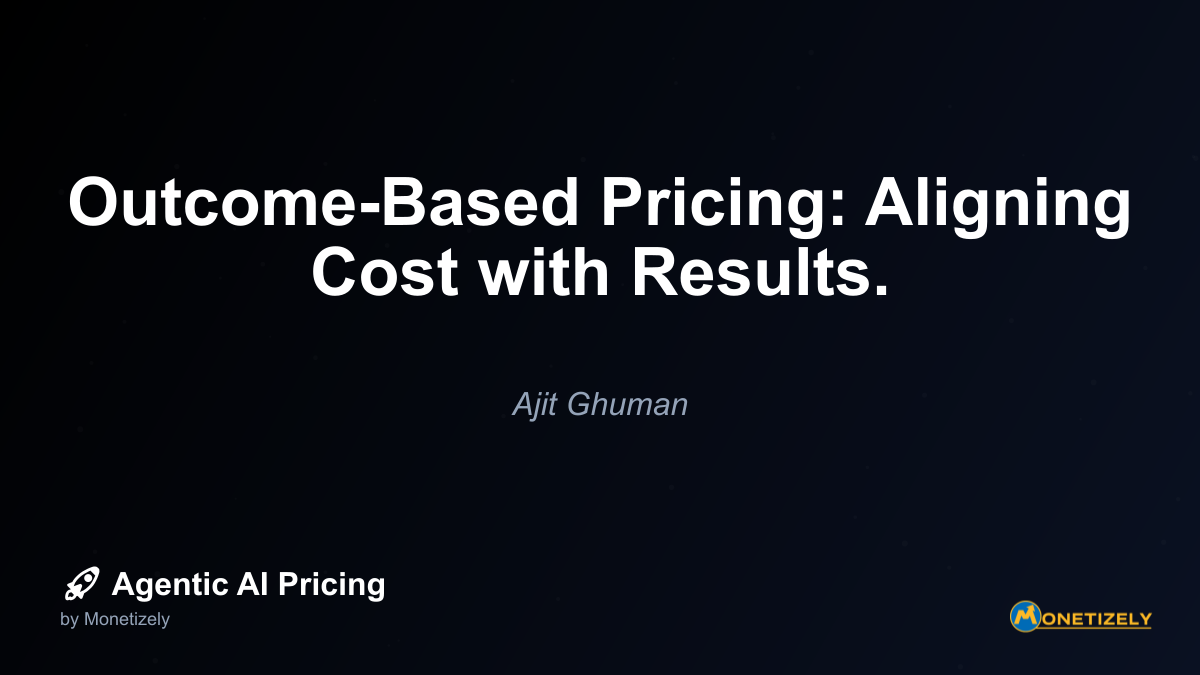
Implementing Outcome-Based Pricing: A Framework
For organizations considering outcome-based pricing for their agentic AI solutions, the following framework provides a structured approach:
1. Value Discovery
Begin by thoroughly understanding the potential value your solution can deliver:
- Conduct customer interviews to identify pain points
- Quantify the financial impact of these challenges
- Document current performance metrics
- Model potential improvement scenarios
- Identify which outcomes are most valuable to customers
This discovery process should involve both technical teams who understand the solution’s capabilities and business stakeholders who can validate the value proposition.
2. Outcome Definition
Based on the value discovery, define specific outcomes that:
- Create meaningful business impact for customers
- Are directly influenced by your solution
- Can be reliably measured
- Have reasonable achievement timeframes
- Balance risk appropriately between parties
Document these outcomes with precise definitions, measurement methodologies, and achievement criteria.
3. Pricing Structure Design
Develop a pricing structure that:
- Aligns with the defined outcomes
- Provides sufficient upside for exceptional performance
- Limits downside risk for both parties
- Accounts for implementation and operational costs
- Scales appropriately with customer size or complexity
Consider including minimum fees to cover basic costs while maintaining the outcome-based incentive structure.
4. Measurement Protocol
Create a comprehensive measurement protocol that specifies:
- Data sources and collection methods
- Calculation formulas
- Reporting frequency and format
- Verification procedures
- Dispute resolution processes
This protocol should be documented in detail and agreed upon by all parties before implementation.
5. Contract Development
Develop contracts that clearly articulate:
- Defined outcomes and metrics
- Pricing formulas and payment terms
- Measurement methodologies
- Roles and responsibilities
- Termination conditions
- Intellectual property considerations
Given the complexity of outcome-based arrangements, legal expertise with experience in performance-based contracts is essential.
6. Pilot Implementation
Before full-scale deployment, consider implementing a pilot program that:
- Tests the measurement infrastructure
- Validates outcome definitions
- Refines pricing models
- Builds confidence in the approach
This pilot can operate alongside traditional pricing models to provide comparison data.
7. Continuous Optimization
Once implemented, establish processes for:
- Regular performance reviews
- Metric refinement
- Pricing adjustment as needed
- Outcome expansion to capture additional value
- Customer success monitoring
This ongoing optimization ensures the model remains effective as business conditions and solution capabilities evolve.
Best Practices for Outcome-Based Pricing Success
Organizations that have successfully implemented outcome-based pricing for agentic AI solutions typically follow these best practices:
Start with Clear Communication
Educate customers about how outcome-based pricing works and why it benefits them. Transparency builds trust and helps set realistic expectations about the process and potential results.
Balance Risk Appropriately
While outcome-based pricing shifts some risk to the provider, the model works best when risk is shared appropriately. Consider hybrid models that include some base fees plus outcome-based components, especially for new customers or unproven use cases.
Focus on Customer Success
Outcome-based pricing requires a genuine commitment to customer success. This often necessitates:
- Dedicated customer success teams
- Proactive monitoring and optimization
- Regular business reviews
- Continuous improvement processes
Invest in Measurement Infrastructure
Reliable measurement is non-negotiable for outcome-based pricing. Invest in robust systems for data collection, analysis, and reporting to ensure accurate and transparent outcome tracking.
Build Internal Alignment
Outcome-based pricing affects multiple departments, from sales and marketing to product development and finance. Ensure all teams understand the model and its implications for their roles and objectives.
Iterate and Learn
Few organizations get outcome-based pricing perfectly right on the first attempt. Plan for iteration based on early experiences, customer feedback, and performance data.
The Future of Outcome-Based Pricing for Agentic AI
As agentic AI continues to evolve, outcome-based pricing models are likely to become more sophisticated and widespread. Several trends are emerging:
More Sophisticated Attribution
Advances in causal AI and attribution modeling are making it easier to isolate the specific impact of AI solutions from other factors, enabling more precise outcome-based pricing arrangements.
Real-Time Adjustment
Rather than static outcome definitions, future models may incorporate dynamic targets that adjust based on market conditions, business changes, or other external factors.
Multi-Outcome Models
Instead of focusing on single metrics, more complex models that balance multiple outcomes (e.g., efficiency, quality, and innovation) are emerging to capture the full value of agentic AI solutions.
Industry-Specific Frameworks
Standardized outcome frameworks for specific industries are beginning to develop, making it easier to implement outcome-based pricing without starting from scratch for each customer.
Conclusion
Outcome-based pricing represents a powerful approach for aligning the interests of agentic AI providers with their customers’ business objectives. By directly connecting payment to measurable results, this model creates accountability, builds trust, and ensures that both parties share in the success of the solution.
While implementing outcome-based pricing requires careful planning, robust measurement, and sometimes complex negotiations, the benefits often outweigh these challenges. For customers, the reduced risk and focus on results can make adopting advanced AI solutions more palatable. For providers, the potential for premium pricing based on exceptional performance creates strong incentives for continuous improvement.
As the agentic AI market matures and organizations become more sophisticated in measuring and attributing value, outcome-based pricing is likely to become increasingly prevalent. Forward-thinking organizations that develop expertise in this pricing approach now will be well-positioned to thrive in this evolving landscape.
For business leaders considering outcome-based pricing for their agentic AI solutions, the key is to start with clear value identification, invest in measurement capabilities, and approach the model as an evolving partnership rather than a static transaction. With the right foundation, outcome-based pricing can transform vendor-customer relationships from transactional to truly collaborative, driving better results for all involved.
Co-Founder & CEO
Ajit is the author of Price To Scale, a top book on SaaS Pricing and is the Founder of Monetizely. Ajit has led and worked in pricing and product marketing at firms like Twilio, Narvar and Medallia. His work has been featured in Forbes and VentureBeat. Ajit regularly consults with software companies from Seed stage to post-IPO on pricing strategy. Ajit is also a highly-rated co-instructor for 'The Art of SaaS Pricing and Monetization' on Maven.
Pricing Strategy Audit
Let our experts analyze your current pricing strategy and identify opportunities for improvement. Our data-driven assessment will help you unlock untapped revenue potential and optimize your AI pricing approach.

